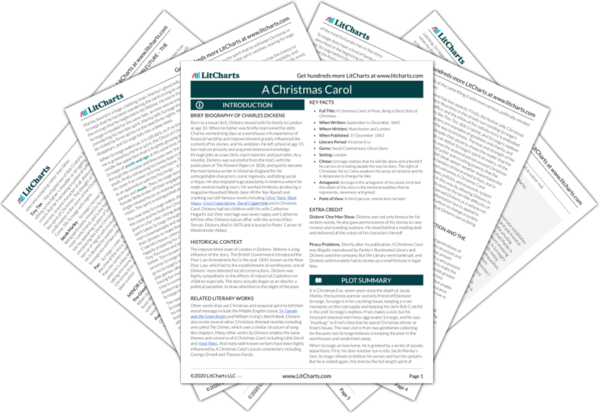Next
Summary
A Christmas Carol Study Guide |
Next
Summary
|
Welcome to the LitCharts study guide on Charles Dickens's A Christmas Carol. Created by the original team behind SparkNotes, LitCharts are the world's best literature guides.

Dickens’ One Man Show. Dickens was not only famous for his written words, he also gave performances of his stories to rave reviews and standing ovations. He stood behind a reading desk and delivered all the voices of his characters himself.
Piracy Problems. Shortly after its publication, A Christmas Carol was illegally reproduced by Parley’s Illuminated Library and Dickens sued the company. But the Library went bankrupt, and Dickens unfortunately had to stump up a small fortune in legal fees.